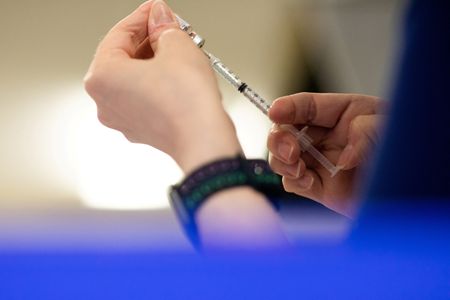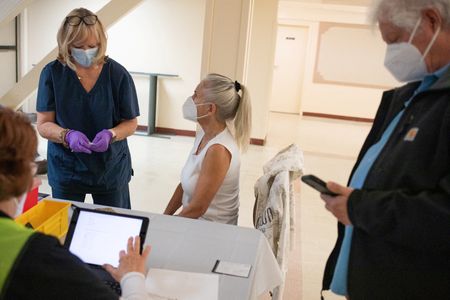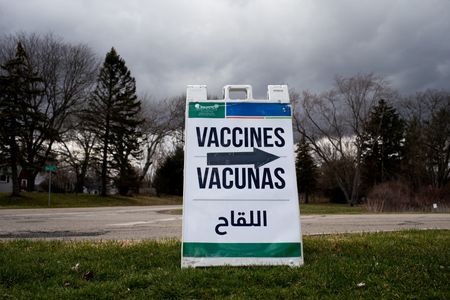By Deena Beasley and Julie Steenhuysen
(Reuters) – New data from scientists and vaccine makers Moderna and Pfizer/BioNTech suggests that a newer, highly mutated variant of the virus that causes COVID-19 is not as alarming as some experts had feared when it was first detected several weeks ago.
Nicknamed “Pirola” on social media, the BA.2.86 Omicron subvariant is being tracked by both the World Health Organization (WHO) and the U.S. Centers for Disease Control and Prevention (CDC).
What is new about COVID?
COVID infections and hospitalizations have been rising in the U.S., Europe and Asia, but are well below previous peaks. The weekly U.S. hospitalization growth rate slowed for three consecutive weeks in August, according to CDC data for the week ended Aug. 26.
As of Aug. 30, CDC said the BA.2.86 variant was detected in at least four U.S. states in people or wastewater. Delaware on Tuesday said it had detected a BA.2.86 infection at a hospital. The WHO has reported finding BA.2.86 in at least six countries.
According to CDC data, the EG.5 subvariant, a descendant of the Omicron lineage nicknamed “Eris” on social media that originally emerged in November 2021, accounts for about a fifth of current U.S. COVID cases.
A variant nicknamed “Fornax,” officially FL.1.5.1, is the next largest at 14.5% of U.S. infections, and represents a growing share of East Coast COVID cases. A wide range of other variants account for smaller shares of the total, with BA.2.86 currently representing less than 1%.
Dr. David Dowdy, an infectious disease epidemiologist at Johns Hopkins Bloomberg School of Public Health, believes FL.1.5.1 will become the predominant COVID variant in the coming months, but he does not expect an infection wave like the one driven by Omicron last winter.
Dowdy suggested that the current surge in cases may be due to immunity from vaccination and infection wearing off some since the last surge.
What do scientists say about BA.2.86?
Scientists have been keeping an eye on BA.2.86 because it carries more than 35 mutations in key portions of the virus compared to XBB.1.5, the dominant variant through most of 2023.
The dramatic changes – on par with the genetic shift seen in the Omicron variant compared with its Delta predecessor – raised concerns that the new variant could cause a major surge.
Experiments testing versions of the virus in two U.S. independent laboratories suggest that is unlikely, said Dr. Dan Barouch, director of the Center for Virology and Vaccine Research at Beth Israel Deaconess Medical Center in Boston, whose lab led one of the studies.
His team tested lab-made versions of the virus in people who were vaccinated or previously infected and found that antibodies against the variant were comparable or slightly higher than those against current circulating variants.
Experiments done in the lab of Dr. David Ho at Columbia University, as well as by teams in Sweden and China, had similar findings.
Will vaccines protect against new variants?
Barouch’s studies also suggested that newly updated vaccines will raise antibody responses “to some extent” against all of the currently circulating variants, including BA.2.86.
Moderna on Wednesday said clinical data showed that its retooled COVID vaccine generated a nearly 9-fold increase in human antibodies that can neutralize BA.2.86.
Pfizer said on Wednesday that its updated COVID shot showed neutralizing activity against BA.2.86 and EG.5 in studies conducted on mice.
The updated shots are being reviewed by the U.S. Food and Drug Administration and are expected to be available this month.
(Reporting By Deena Beasley and Julie Steenhuysen; Editing by Bill Berkrot)








